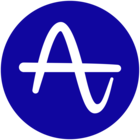Hey everyone,A customer has asked for our support to enhance attribution for GenAI-generated offers delivered via Braze push/in-app messages. The key detail is that those offers are tailored for customer (1:1) instead of defined by a human at scale (1:N).Their main goal is to improve week-over-week conversion rates for these recommended offers.To do this, they need to track purchases influenced by each specific GenAI model behind the push, email or in app message.This approach can also help demonstrate the value of personalized offers in an environment currently focused on 1-to-N sales efforts—where stakeholders are used to managing individual products at the top of the funnel (awareness), rather than optimizing for bottom-of-funnel metrics like conversion, or long term loyalty leading metrics like LTV, Stickiness or frequency.Our initial recommendations:
- Ingest Braze campaign data into Amplitude.
- Create a property to identify which GenAI generated the offer in each push/in-app message.
- Track conversions over time, segmenting by this property.
- Funnel: Conversion over time:
- Filtered by GenAI model not equal none
- Filtered by GenAI model not equal none AND Grouped by Gen AI Model
- Filtered by GenAI model not equal none AND Grouped by SKU
- Funnel: Conversion over time:
A second approach could be:
- Create an experiment in Amplitude.
- Sync users in the treatment cohort to Braze.
- Deliver the GenAI-generated offer to the treatment group via Braze push/in-app campaigns
- Validating the LIFT in each experiment summary page
- Levering Experiment Results Charts and Notebooks for further analysis and internal meetings.
Do any of you see blind spots or potential pitfalls in these recommendations?Additionally, does anyone have tips, dashboard templates, or resources (e.g., talks or case studies) to help promote a mindset shift from short-term, top-of-funnel reach to long-term customer loyalty (LTV, AOV, Stickiness, Retention)?For example, similar to YouTube’s 2012 shift referenced in John Doerr’s "Measure What Matters." and other articles:
To increase user engagement and retention, the company in early 2012 changed its algorithms to boost watch time instead of views. Immediately, clicks dropped nearly 20% partly because users stuck with videos longer.
Months later, YouTube executives unveiled a goal of 1 billion hours of watch time daily by the end of 2016. At the time, optimistic forecasts projected it would reach 400 million hours by then.
Thanks in advance for your insights!
mediapost.com
Research Brief: YouTube Serves Up A Billion Hours Of Video A Day
YouTube viewers world-wide are now watching more than 1 billion hours of videos a day, boosted by algorithms personalizing user lineups, and threatening to eclipse U.S. television viewership.



